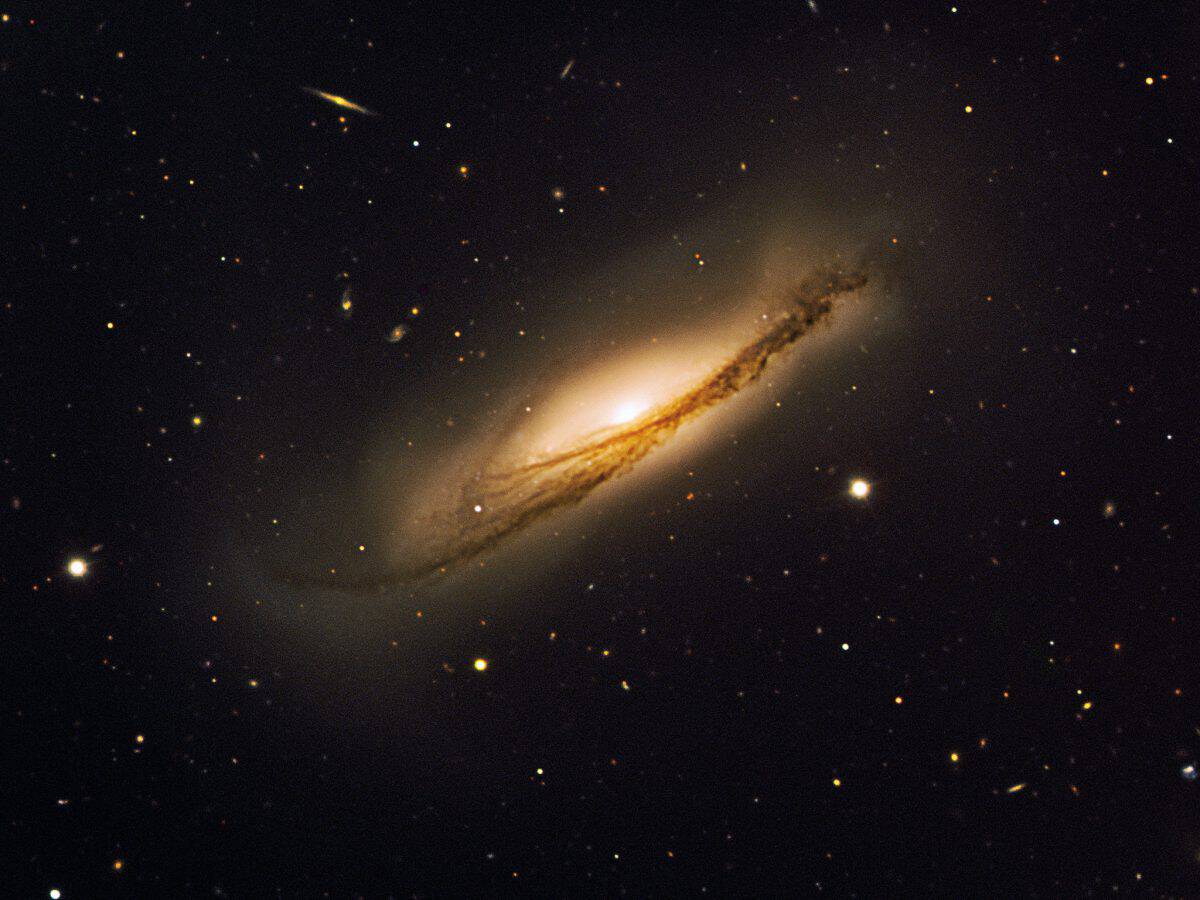The Cosmos with NGC 3190
The beautiful edge-on spiral galaxy NGC 3190 with tightly wound arms and a warped shape that makes it resemble a gigantic potato crisp, as seen by ESO’s Very Large Telescope. Supernova SN 2002bo is found in between the ‘V’ of the dust lanes in the south-western part of NGC 3190. SN 2002cv is obscured by a large amount of dust and is therefore not visible. Its position is however indicated on the above image. This colour composite is based on images obtained on 26 March 2003 with FORS1 on UT2 (Kueyen) in four filters (B, V, R and I) for a total exposure time of 14 minutes. The observations were done in the framework of a programme aiming at studying the physics of Type Ia supernovae. The field of view is 6.15 x 5 arcminutes. North is up and East is to the left. The data extraction from the archive, data reduction and final colour processing of the image was done by Henri Boffin (ESO).
NGC 3190 is a spiral galaxy with tightly wound arms and lying in the constellation Leo. It was discovered by William Herschel in 1784. NGC 3190 is member of Hickson 44 galaxy group, estimated at around 80 million light years away,[2] and consisting of four galaxies in a tight group – NGC 3193 is fairly featureless, NGC 3187 is a dim but striking spiral galaxy and NGC 3185 has a barred spiral structure with an outer ring.
In 2002 two supernovae were observed in the galaxy. A Brazilian amateur astronomer Paulo Cacella detected one supernova in the southeastern part in March 2002 (SN 2002bo), and then an Italian team, while studying the first one, detected a second supernova (SN 2002cv) on the other side two months later.
